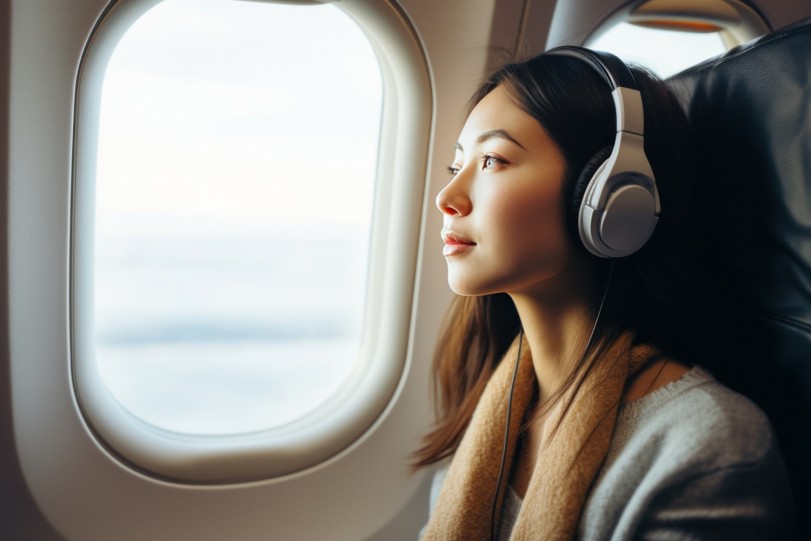
(Photo : Vecteezy/Yulia Gapeenko)
In an age where jet-setting across continents has become increasingly common, it's crucial to understand the toll that air travel can take on your skin.
While hopping on a plane can be an exciting experience, the cabin environment poses unique challenges for your skin's health and appearance.
One of the most significant factors affecting skin during air travel is the cabin's low humidity levels.
At typical aircraft cruising altitudes, the ambient air contains extremely low levels of water vapor. Consequently, the humidity levels within the cabin typically range from 10% to 20%, significantly lower than the 40% to 50% humidity found in buildings, as per the U.K. Civil Aviation Authority.
This low humidity can cause the skin to become dry, tight, and dull.
According to experts at Dermalogica, the controlled pressure environment within the aircraft cabin can also have a notable impact on skin health.
This regulated pressure can result in moisture being drawn out from the skin, leading to dehydration. As a consequence, dehydration often manifests visibly through dryness and flakiness, making it a common concern for those who travel frequently.
Moreover, according to Forefront Dermatology, prolonged periods of sitting and excessive salt intake can lead to water retention. This may result in noticeable facial puffiness or swollen feet following extended air travel.
During flights, chefs reportedly typically add approximately 15% more salt to dishes, compensating for the 30% decrease in our taste buds' capacity while flying, as noted by Grupo One Air.
Clinikally also pointed out that the recycled air within airplanes may contain higher concentrations of free radicals, which have the potential to harm skin cells.
So, what can you do to mitigate the adverse effects of air travel on your skin?
Hydration is key -- drink plenty of water before, during, and after your journey to counteract dehydration.
Additionally, applying a rich moisturizer and a hydrating serum before boarding can help lock in moisture and create a protective barrier against environmental stressors.
In-flight skincare routines can also make a significant difference. Consider using a facial mist or hydrating mask to replenish moisture levels throughout the flight. Opt for gentle, non-comedogenic products to avoid clogging pores and exacerbating existing skin issues.
Moreover, don't forget the importance of sun protection, even when flying above the clouds. UV radiation can penetrate airplane windows, contributing to skin damage and aging.
Apply a broad-spectrum sunscreen with an SPF of 30 or higher before your flight, and reapply as needed, especially on long journeys.
By understanding the challenges posed by the cabin environment and implementing a proactive skincare regimen, you can keep your skin healthy, hydrated, and glowing no matter how far you fly.

